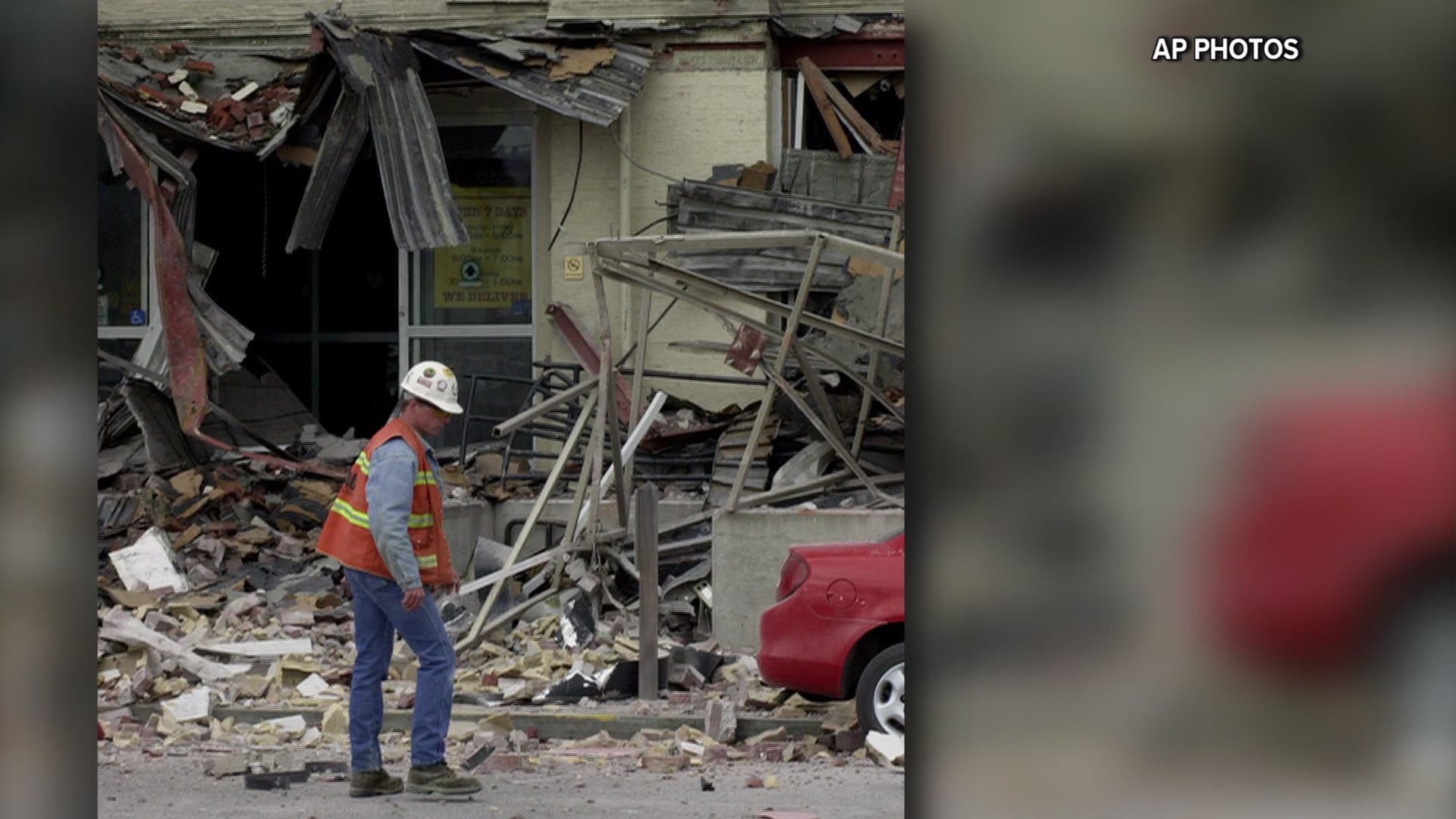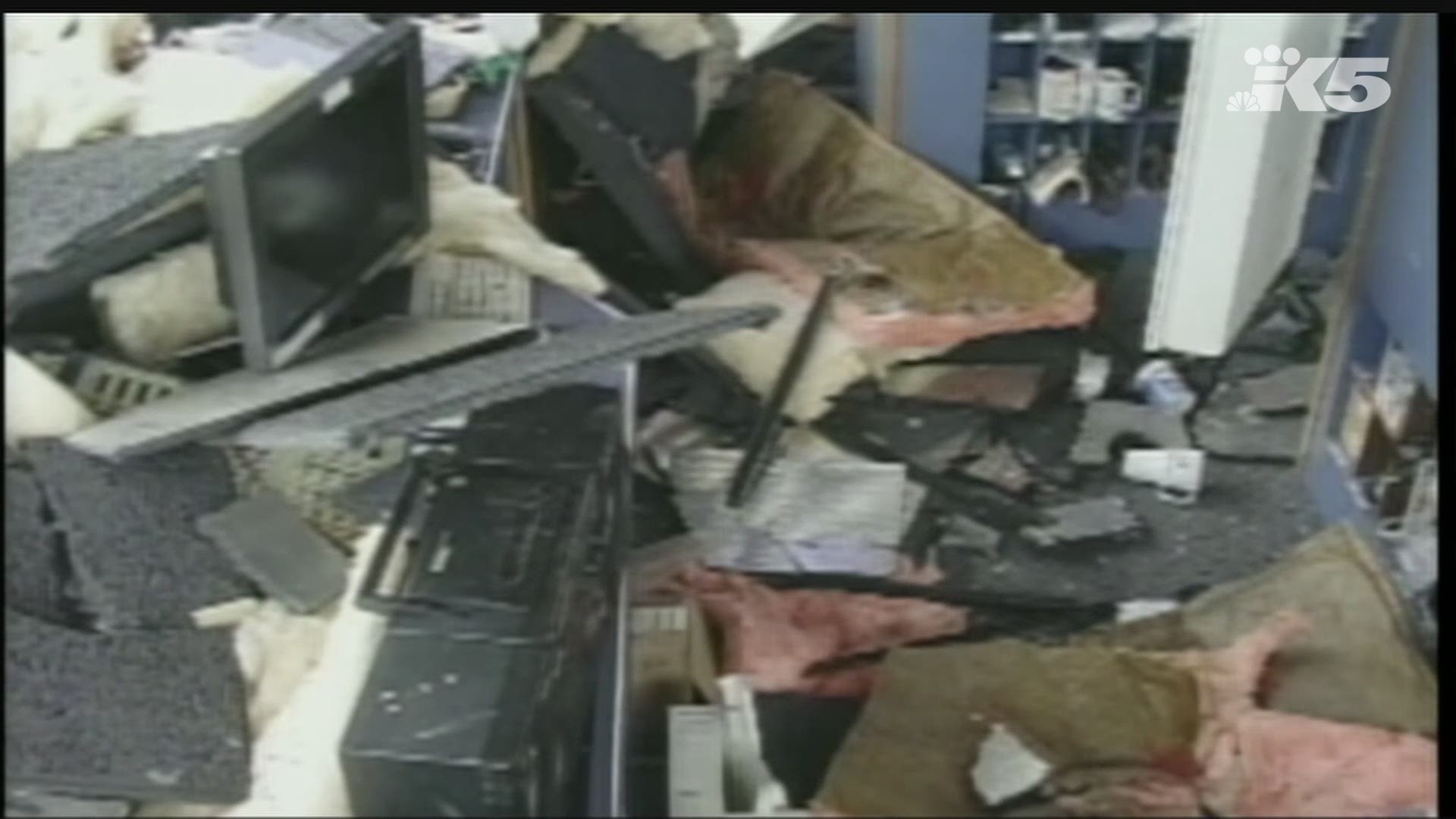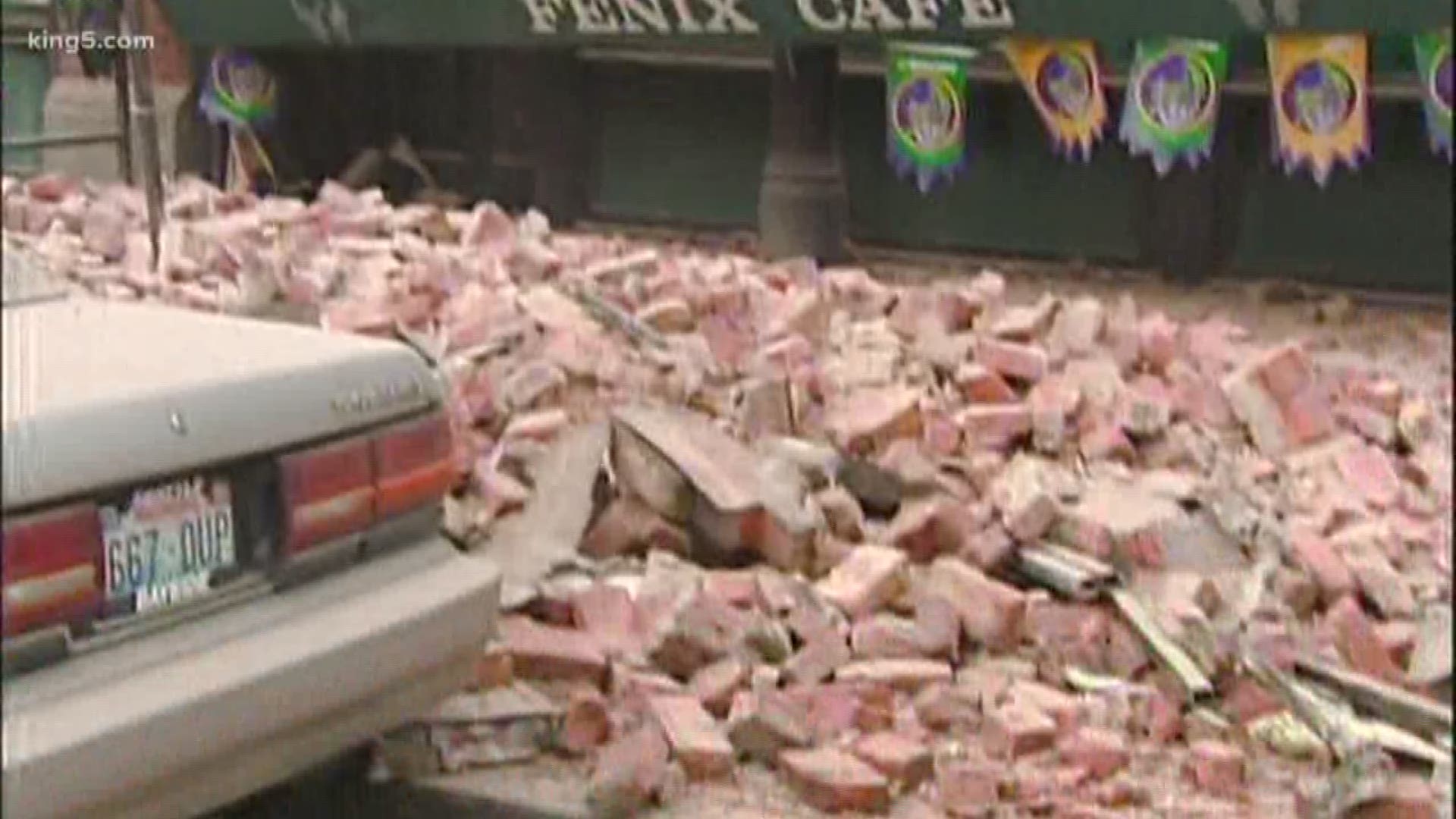SEATTLE — Nineteen years ago, the Nisqually earthquake shook the Pacific Northwest causing about $2 billion in damage and injuring over 400 people.
The 6.8 magnitude earthquake on Feb. 28, 2001, occurred at 10:54 a.m., centered about 11 miles north of Olympia, which saw some of the strongest shaking along with Seattle’s Pioneer Square.
It was the biggest earthquake the region had seen since a 6.7 magnitude quake in 1965 and served as an important wakeup call sparking a new wave of emergency preparedness planning and infrastructure projects in the region.
“It’s one thing to try and imagine what your worst day is going to be like and it’s another one to actually live through it and see the lessons,” said Seattle Emergency Management Director Barb Graff, who was Bellevue’s emergency preparedness manager at the time of the Nisqually earthquake.
The earthquake damaged brick buildings in Pioneer Square and created cracks in the Alaskan Way Viaduct, which ultimately led to its replacement with the State Route 99 tunnel under downtown Seattle, which opened in February 2019.
“The main impetus for replacing the viaduct was the Nisqually quake,” former Governor Christine Gregoire said. “Had that lasted just a few seconds longer – 15 to 20 seconds – we believe that viaduct would have come down, so as I said to everybody in transportation, we must take that viaduct down before mother nature does.”
Infrastructure impacts
Although it took over a decade and cost about $3.3 billion, Seattle’s new tunnel is now the safest place to be in an earthquake in the city, according to the Washington State Department of Transportation.
The tunnel is designed to hold up against most major earthquake threats in the Pacific Northwest, including a potential magnitude 9 earthquake out of the Cascadia Subduction Zone off the Washington coast. One of the reasons why it’s so earthquake-resistant is because the tunnel is underground and designed to move with the ground when there’s shaking.
The SR 99 tunnel may be one of the most high-profile infrastructure projects that came as a result of the quake, but a litany of others were also impacted.
Graf cited the Elliott Bay Seawall project in Seattle, which reconstructed the aging seawall in conjunction with tunnel construction, and repairs at the Emma Schmitz Park seawall in West Seattle.
The city is also working to retrofit bridges that could be susceptible to damage during an earthquake. A 2007 levy-funded retrofitting on bridges, including the Ballard Bridge, Albro Bridge, and Fauntleroy Expressway. A 2015 levy promised to retrofit another two dozen bridges by 2024.
Aging buildings have also begun to be retrofitted through the city’s program to outfit unreinforced masonry buildings and preserve historical character while also protecting the public during a quake. The city is still in the process of retrofitting those buildings.
How to prepare
As far as the disaster response, Graff said if Nisqually happened again today we would be more prepared. The city moved to a more capable emergency operations center in 2008 that is designed to a higher seismic standard, is at least 10 times larger than the previous center, and features a communications room staffed by amateur radio operators.
Graff also said disaster communication and planning has also improved since Nisqually, especially between regional agencies and the federal government.
“The city had in place a disaster readiness and response plan, but what we didn’t have in place was a full-fledged recovery framework, regional catastrophic plans, a much more in-depth regional mitigation plan, and a comprehensive emergency management plan,” Graff said.
Earthquake experts say “the big one” is not a matter of if but when, and it is every resident’s job to be prepared.
When disaster hits, don’t count on first responders being able to get to you right away. Emergency management officials urge people to prepare to be on their own for up to 14 days, which means building a disaster preparedness kit with food, water, first aid supplies, medications, and a hand-crank radio.
It’s also up to you to know the disaster response plan at your workplace or child’s school and make a communication plan with your family. The city of Seattle offers resources for earthquake-proofing and retrofitting your home along with workshops to learn how your neighborhood or workplace can prepare.
“Seattle has grown so fast. We’ve had people move to the area from all over the world, and many of those places are not necessarily earthquake country,” Graff said. “Our ability to teach people about the risk and how to be self-prepared and how to join together and create neighborhood groups and things like that is always going to be important to us.”




